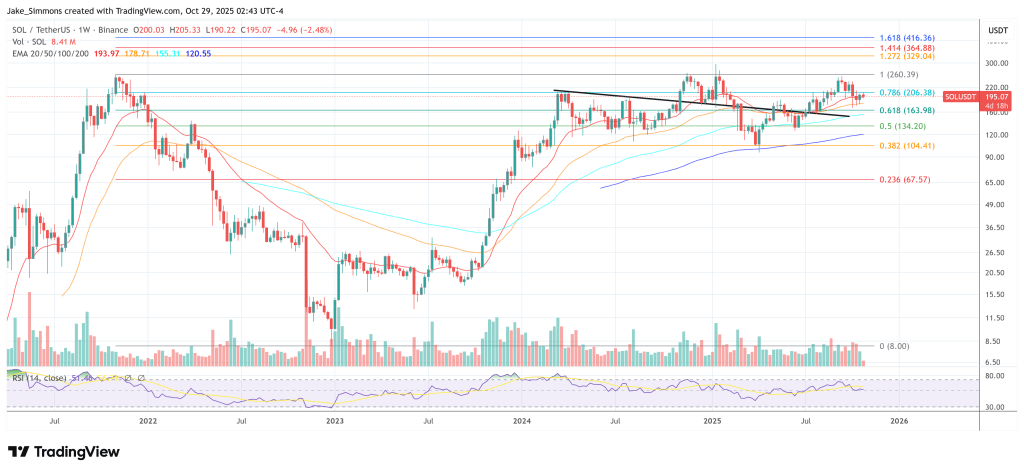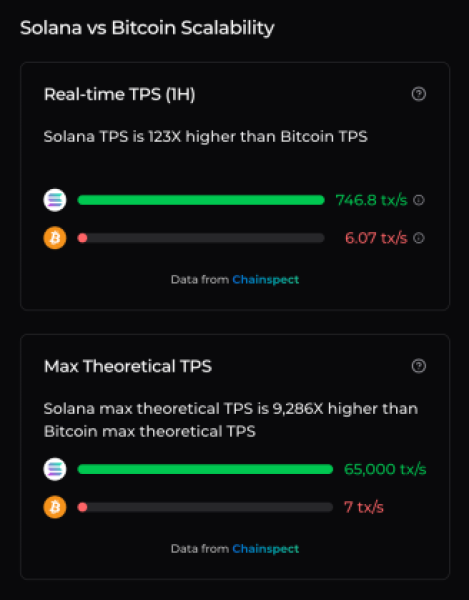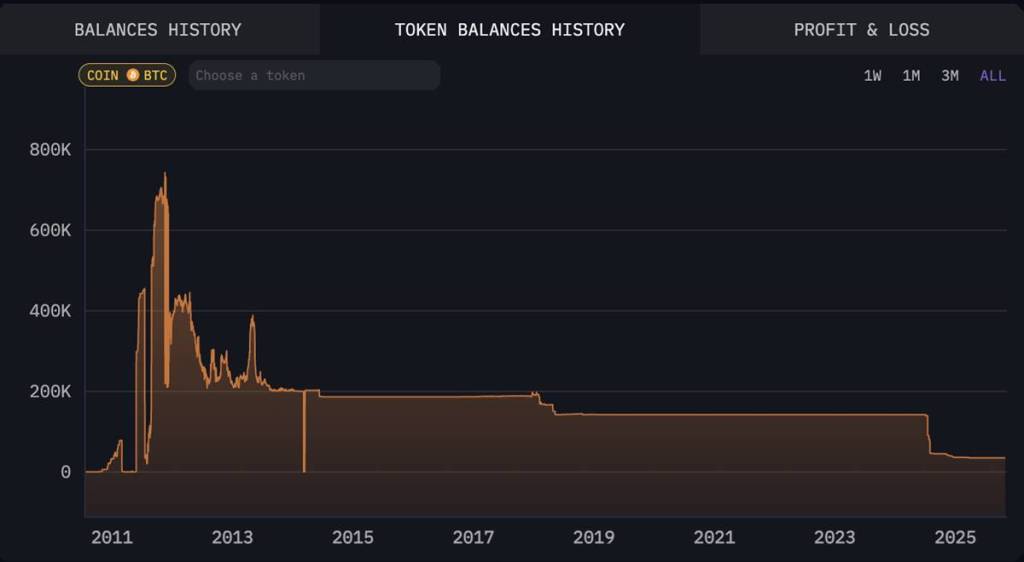
As cryptocurrencies continue to gain popularity, more and more investors are building diverse portfolios of digital assets. Evaluating the performance of a crypto portfolio is essential for making informed decisions and maximizing returns.&
This article provides an overview of different methods to assess your crypto portfolio performance, along with the factors that affect it, and the importance of regular evaluations.&
By the end, you'll have a better understanding of effectively managing your investments in the ever-evolving world of cryptocurrencies.
Let’s dive right in!
How to Check Crypto Portfolio Performance?
Tracking Portfolio Value
The first step in evaluating your crypto portfolio performance is to track its total value. This can be done using various tools and apps designed for monitoring digital. Ensure that you update the values of your holdings regularly and compare them against your initial investment to calculate your overall returns.
For instance, if you initially invested $5,000 in a diverse set of cryptocurrencies, and after a year, the value of your portfolio is $7,500, your overall return would be 50%. If your portfolio consists of 50% Bitcoin, 30% Ethereum, and 20% small-cap altcoins, you may want to adjust the composition if it doesn't align with your risk tolerance or investment goals.
Reviewing Portfolio Composition
A well-diversified portfolio is essential for managing risk in the volatile crypto market. Review your portfolio composition to ensure that you have the right mix of assets, such as large-cap, mid-cap, and small-cap cryptocurrencies. This helps spread the risk across different types of digital assets and minimizes the impact of any single investment's poor performance.
Develop a clear rebalancing strategy, such as setting specific thresholds for asset allocation or rebalancing at regular time intervals (e.g., quarterly or annually). When your portfolio's asset allocation drifts from your target, execute trades to bring it back in line. This may involve selling assets that have performed well and buying those that have underperformed. Be mindful of tax implications and trading fees when making these transactions.
After rebalancing, continue to track your portfolio's performance and ensure that it aligns with your investment objectives. Rebalancing can help improve risk-adjusted returns and keep your portfolio on track toward your long-term goals.
For example, if your target allocation is 60% Bitcoin and 40% Ethereum, and due to market fluctuations, your portfolio ends up with 70% Bitcoin and 30% Ethereum, you would sell some Bitcoin and buy Ethereum to restore the 60-40 allocation. Afterwards, monitor how the rebalanced portfolio performs and make adjustments as needed.
Assessing Risk and Returns
Evaluate the risk-to-return ratio of your portfolio. Higher returns often come with higher risks, but you should find a balance that matches your investment goals and risk tolerance. Use historical data and performance metrics like standard deviation, Sharpe ratio, and Sortino ratio to assess the risk and return of your portfolio.
Let's use a simplified example to illustrate the concept of assessing risk and returns in a crypto portfolio.
Imagine you have a crypto portfolio with two assets: Bitcoin (BTC) and Ethereum (ETH), with 70% of your investment in Bitcoin and 30% in Ethereum.
Over the past year, Bitcoin has returned 20%, and Ethereum has returned 40%. To find your portfolio's overall return, you would use the following formula:
(Portion in BTC Return of BTC) + (Portion in ETH Return of ETH)
In this case:
(0.7 20%) + (0.3 40%) = 14% + 12% = 26%
So, your portfolio's overall return over the past year is 26%.
Next, let's consider risk. Let's say that Bitcoin's price tends to fluctuate by 10% and Ethereum's price by 15%. In simple terms, these percentages represent the risk levels of the individual crypto assets. You could use these values to get a rough idea of your portfolio's risk level.
As you gain more experience with investing, you might explore more advanced risk metrics, such as the Sharpe ratio, to better assess the risk and return of your portfolio. However, this basic example should provide a clearer understanding of how to assess your portfolio's performance.
Best Ways to Evaluate Crypto
Price Analysis
Price analysis involves comparing the historical price movements of cryptocurrencies to identify trends and potential opportunities. This can help you make informed decisions on when to enter or exit the market and adjust your portfolio accordingly.
If you notice that the price of a particular cryptocurrency has been steadily increasing over the past six months, this upward trend might suggest that the asset is gaining value and could continue to appreciate. Conversely, if the price has been consistently declining, you may want to consider reducing your exposure to that asset or looking for alternative investment opportunities.
Fundamental Analysis
Fundamental analysis focuses on the intrinsic value of a cryptocurrency based on its underlying technology, team, market demand, and other factors. By understanding the fundamentals, you can identify undervalued assets and make better investment decisions.
Suppose you're analyzing a relatively new cryptocurrency called CryptoXYZ. You would examine its whitepaper, development team, use case, and market demand. If you find that CryptoXYZ has a strong team, a unique and in-demand use case, and a growing user base, this could indicate that the asset is undervalued and has strong growth potential.
As a result, allocating a modest portion of your portfolio to this particular token could be a strategic decision, allowing you to explorе portfolio diversification opportunities.&
Technical Analysis
Technical analysis uses historical price data and various indicators to predict future price movements. This approach can help you identify potential entry and exit points, as well as uncover trends and patterns that could impact your portfolio's performance.
Let’s say you are aware of technical analysis principles and want to analyze the price chart of Ethereum (ETH). When doing so, you notice a "double bottom" pattern, which typically signals a bullish reversal. By using technical indicators such as the Relative Strength Index (RSI) and Moving Average Convergence Divergence (MACD), you confirm that the trend is shifting from bearish to bullish. Based on this analysis, you might decide to increase your investment in Ethereum or enter a new position.
Other Factors to Consider
In addition to the methods mentioned above, consider other factors such as market sentiment, regulatory developments, and industry news when evaluating your crypto investments.&
Let's say you're invested in a privacy-focused cryptocurrency. You hear news of a major regulatory crackdown on privacy coins in several countries. This development could negatively impact the market sentiment and demand for privacy-focused cryptocurrencies.&
In response, you might consider reducing your exposure to these assets or diversifying into other types of cryptocurrencies with less regulatory risk.
Evaluating Crypto Portfolio Performance Based On Asset Market Capitalization
Market capitalization is a useful metric for understanding the relative size and stability of a cryptocurrency. It is calculated by multiplying the current price of the asset by the total number of coins in circulation. By assessing your portfolio performance based on market capitalization, you can gain insights into the contribution of individual assets to your overall returns and identify areas for improvement. This can be particularly helpful in creating a well-balanced and diversified portfolio that aligns with your investment goals and risk tolerance.
Cryptocurrencies can be categorized into three groups based on market capitalization:
Large-cap Cryptocurrencies: These are well-established, high market cap coins, typically valued over $10 billion. They are considered more stable and less risky than smaller-cap assets. Examples include Bitcoin (BTC) and Ethereum (ETH).
Mid-cap Cryptocurrencies: These assets have a market cap between $1 billion and $10 billion. They may offer higher growth potential than large-cap coins but carry a greater degree of risk. Examples include Chainlink (LINK) and Polygon (MATIC).
Small-cap Cryptocurrencies: These coins have a market cap below $1 billion and are considered the riskiest of the three categories. They often have the highest potential for gains but can also experience significant price volatility. Examples include Basic Attention Token (BAT) and Decentraland (MANA).
When evaluating your crypto investment portfolio performance based on market capitalization, you can analyze the returns generated by each category and their contribution to your overall portfolio. This will help you identify over- or under-exposure to certain market segments and make any necessary adjustments to optimize your portfolio's performance.
Suppose your portfolio consists of 60% large-cap coins, 30% mid-cap coins, and 10% small-cap coins. After evaluating the performance of each category, you find that your mid-cap investments have outperformed both large- and small-cap coins in terms of returns. In response, you might consider rebalancing your portfolio to increase your exposure to mid-cap assets, which could help boost overall returns while still maintaining an acceptable level of risk.
Factors that Affect Crypto Portfolio Performance
Market Conditions
Market conditions, such as bullish or bearish trends and market cycles, significantly influence your crypto portfolio's performance. Economic fluctuations and global events can also impact the valuation of your investment payment and financial assets. As an investor, it's essential to understand these market dynamics and adjust your strategy accordingly. In bullish markets, you might consider increasing your exposure to high-growth assets, while in bearish markets, you may want to focus on more stable investments or consider taking profits and reallocating funds.
Investor Behavior
Investor sentiment and behavior play a crucial role in driving price movements in the crypto market. Psychological factors, such as fear, greed, and FOMO (Fear of Missing Out), can lead to herd mentality and irrational decision-making, impacting your portfolio's performance.&
As an investor, it's essential to be aware of these emotions and avoid impulsive decisions. Instead, base your investment choices on thorough research and a clear understanding of your risk tolerance and investment goals.
External Events
External events, such as regulatory changes, security breaches, and technological advancements, can have a direct impact on your crypto investments' performance. For example, increased regulation might lead to decreased demand for certain cryptocurrencies, while a security breach could undermine confidence in a specific project.&
As a responsible investor, it's crucial to monitor these events and assess their implications for your portfolio. Stay informed about industry news and developments, and be prepared to adjust your investment management strategy if necessary to minimize potential risks and capitalize on new opportunities.
Importance of Regular Portfolio Evaluation
Maintaining Portfolio Health
Regular evaluations are essential for maintaining the health of your crypto portfolio. By consistently monitoring your investments, you can ensure that they remain aligned with your financial goals and risk tolerance.&
In practice, this means conducting periodic check-ups to identify imbalances, underperforming assets, and emerging risks. Addressing these issues promptly will help you safeguard your portfolio's health and improve its overall performance.
Identifying Areas of Improvement
Periodic assessments of your crypto portfolio and portfolio management provide opportunities to identify areas for optimization. Through regular evaluation, you may discover that certain assets no longer align with your goals or that your portfolio lacks sufficient diversification to manage risk effectively.&
In these scenarios, you should take action by rebalancing your allocation, diversifying into new asset classes, or exploring alternative investment opportunities that better suit your objectives.
Adjusting Portfolio Strategy
The cryptocurrency market is characterized by rapid changes and high volatility, which can significantly impact your investments. Regular portfolio evaluations enable you to adapt your investment management and strategy in response to evolving market conditions, financial market imbalance, new opportunities, and changing financial goals.&
As an investor, you should stay informed about market trends, be prepared to adjust your asset allocation, and remain agile in your approach. By doing so, you'll be better equipped to navigate the dynamic world of international financial markets and maximize the potential returns of your portfolio.
Conclusion
Crypto portfolio performance evaluation and portfolio management is an essential aspect of successful investing in the digital financial asset space. By tracking your portfolio's value, analyzing its performance, understanding the factors that affect your investments, and conducting regular evaluations, you can optimize your portfolio and maximize your returns. Remember that the cryptocurrency market is dynamic and ever-evolving, so stay informed and be prepared to adapt your investment strategy as needed.
Disclaimer:& All information provided in or through the CoinStats Website is for informational and educational purposes only. It does not constitute a recommendation to enter into a particular transaction or investment strategy and should not be relied upon in making an investment decision. Any investment decision made by you is entirely at your own risk. In no event shall CoinStats be liable for any incurred losses. See our& Disclaimer& and& Editorial Guidelines& to learn more.

You can get bonuses upto $100 FREE BONUS when you:
💰 Install these recommended apps:
💲 SocialGood - 100% Crypto Back on Everyday Shopping
💲 xPortal - The DeFi For The Next Billion
💲 CryptoTab Browser - Lightweight, fast, and ready to mine!
💰 Register on these recommended exchanges:
🟡 Binance🟡 Bitfinex🟡 Bitmart🟡 Bittrex🟡 Bitget
🟡 CoinEx🟡 Crypto.com🟡 Gate.io🟡 Huobi🟡 Kucoin.












Comments